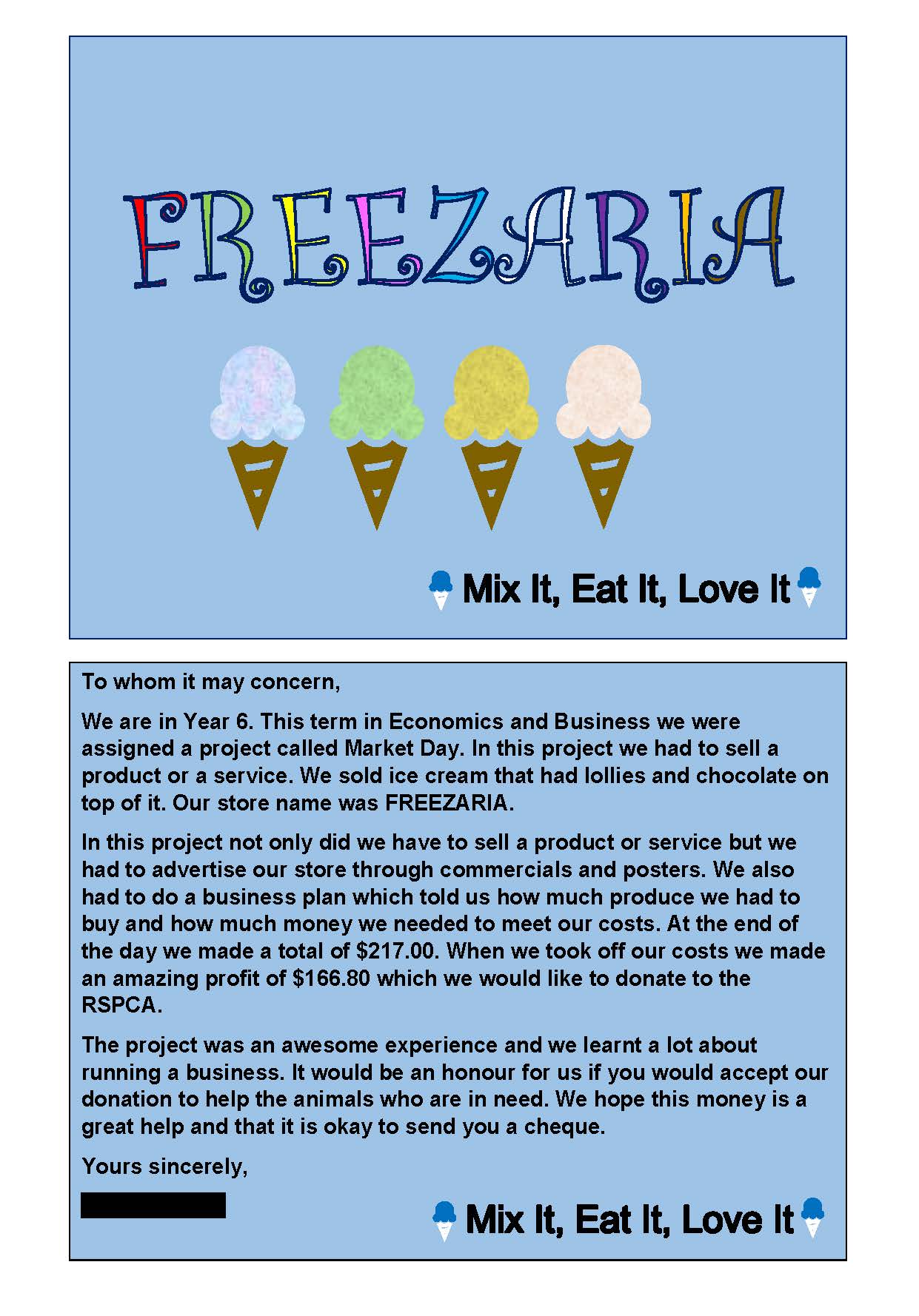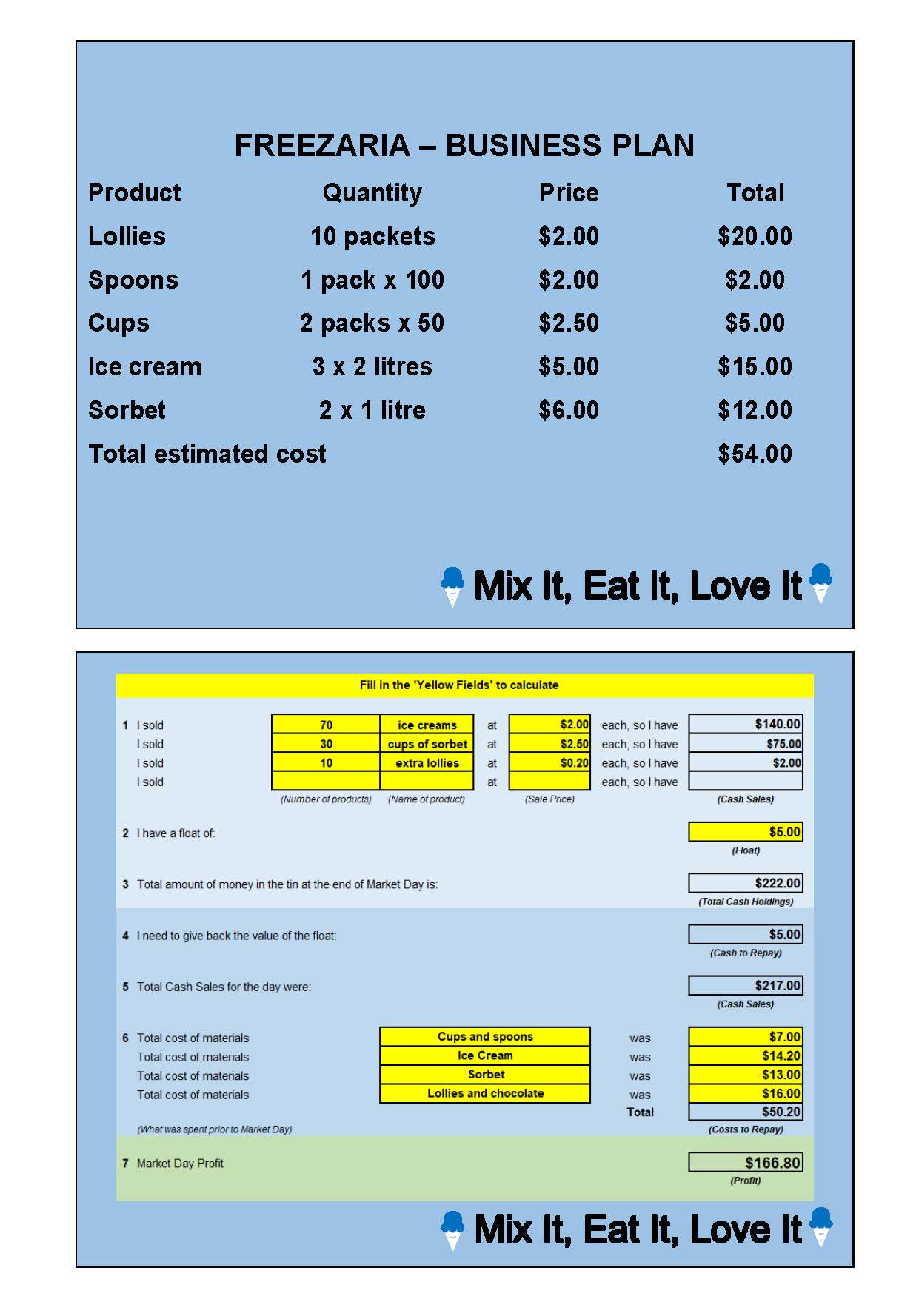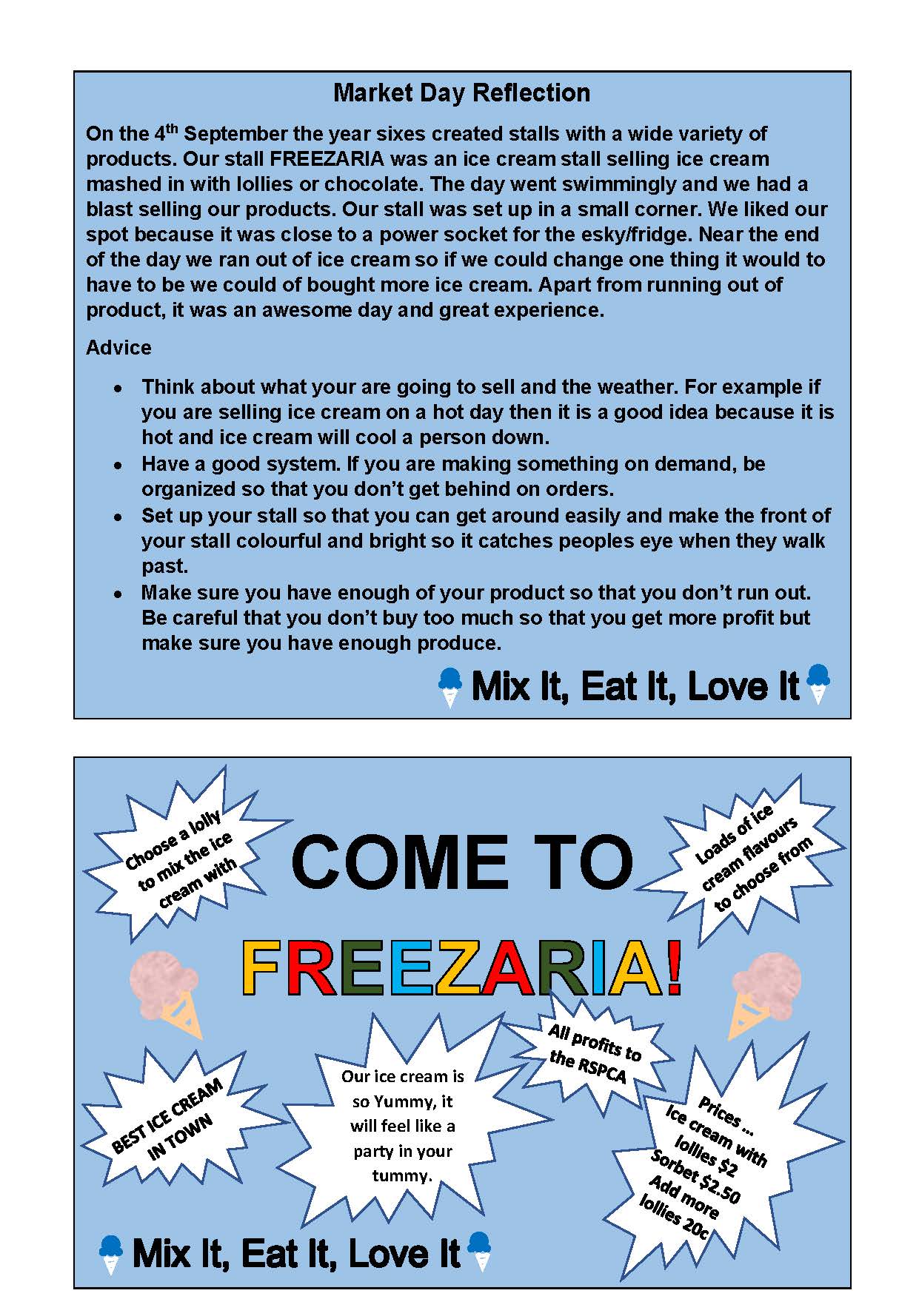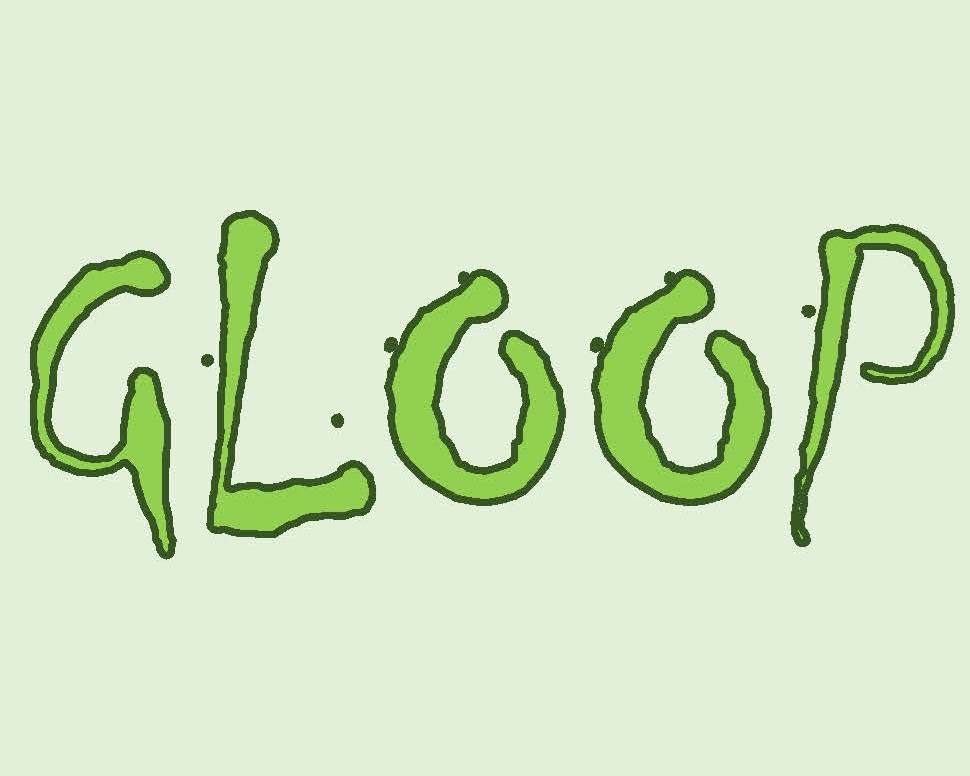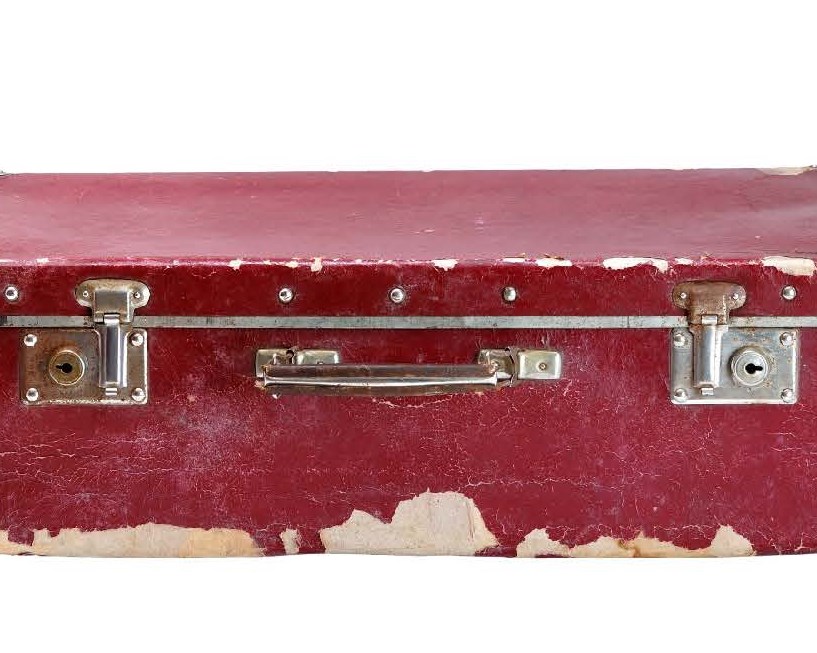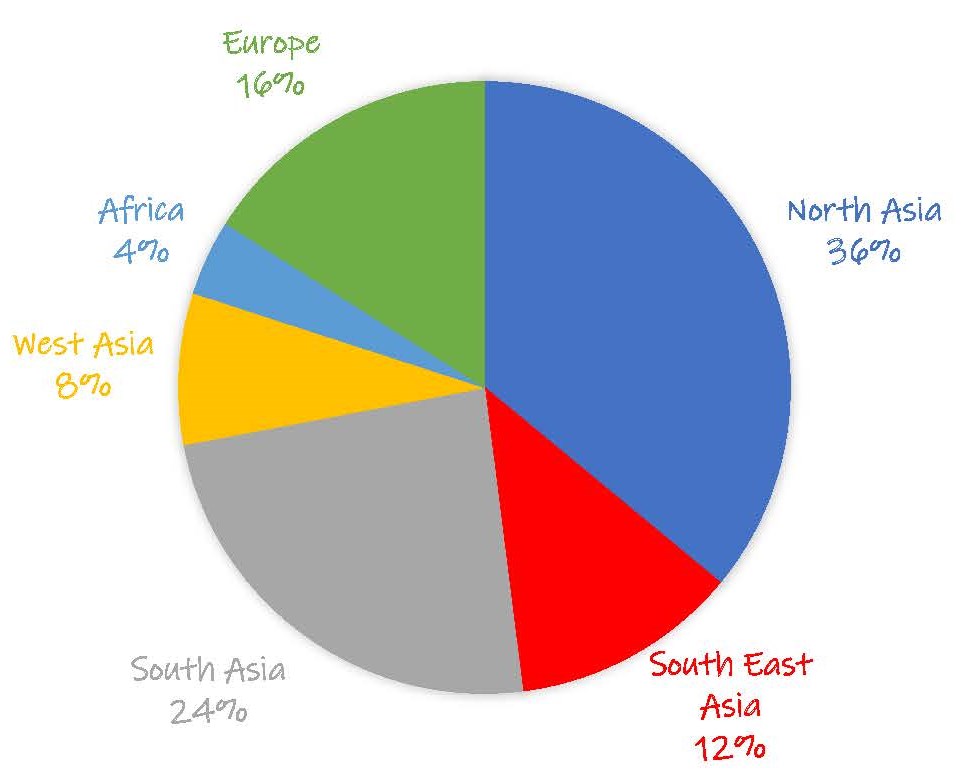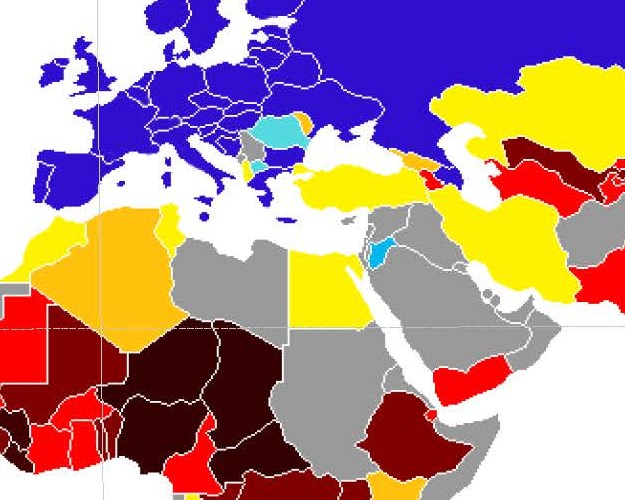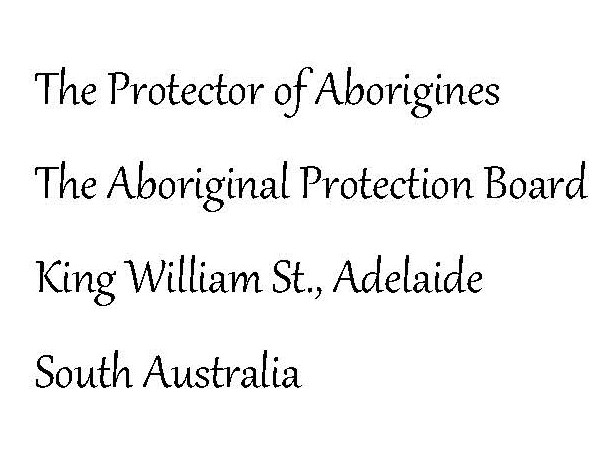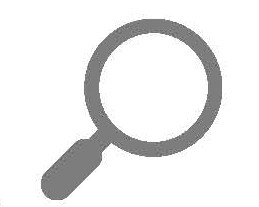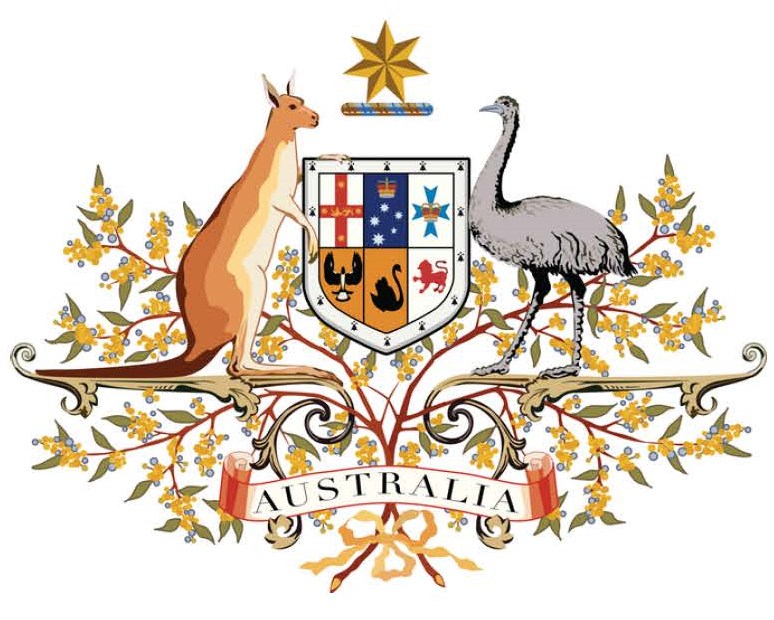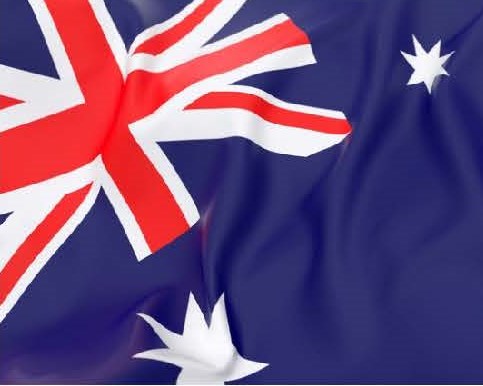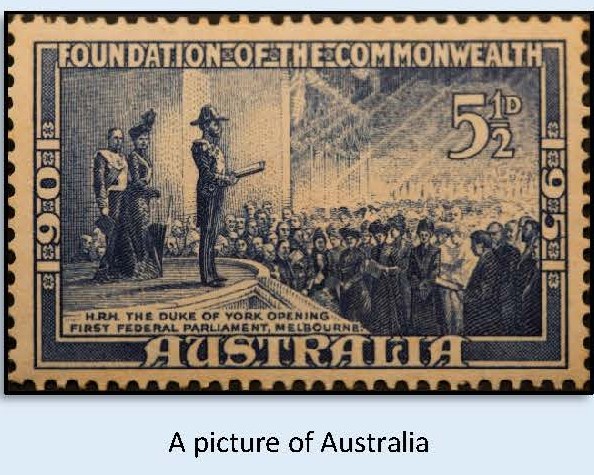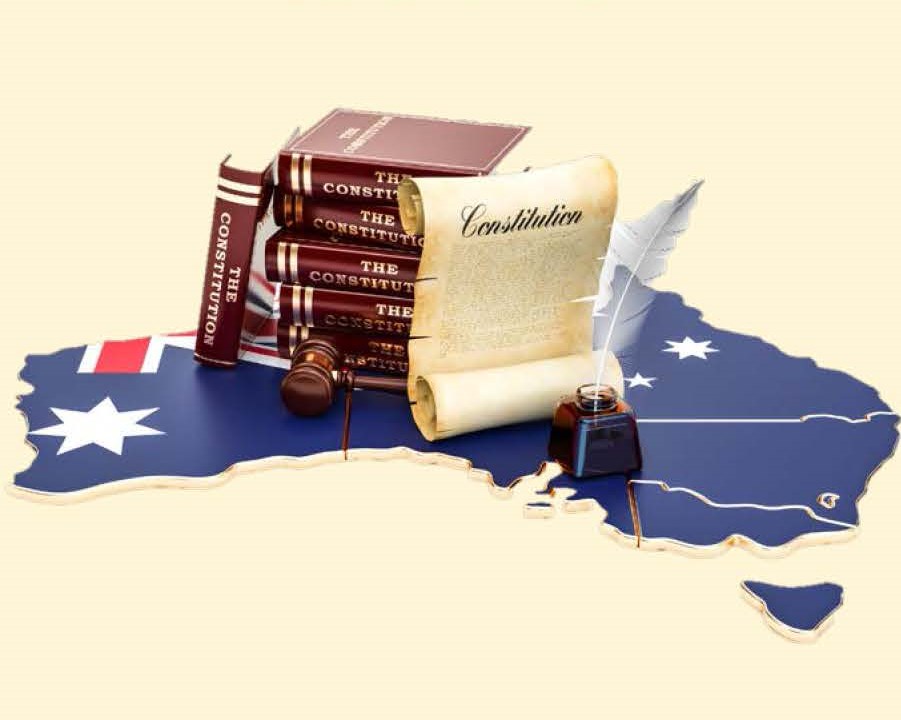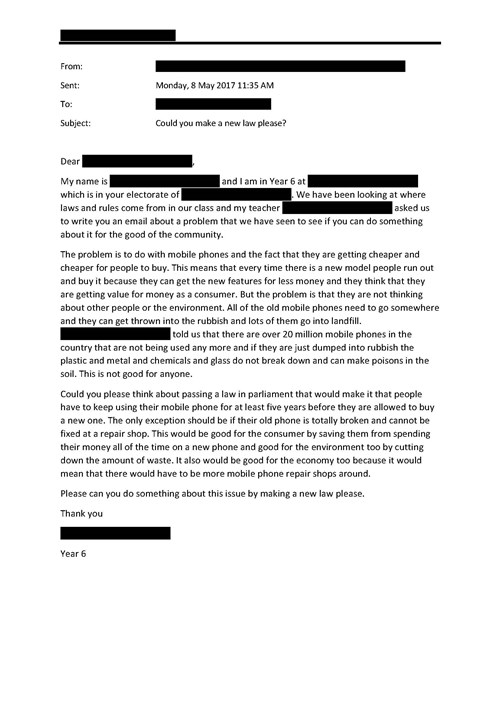Market Day
Summary of task
Students worked in teams to choose and develop a product to sell to the rest of the school at a Year 6 Market Day. The team was required to complete a number of tasks: draw up a simple business plan; create an advertising poster for the product; complete a scaffolded balance sheet; write a letter to a targeted charity offering to donate the profits of the day; and write a reflection on the experience. Student participation in the task was the culmination of a semester-long series of units exploring how businesses operate and the choices and trade-offs that might make a successful business.
Achievement standard
By the end of Year 6, students recognise why choices about the allocation of resources involve trade-offs. They explain why it is important to be informed when making consumer and financial decisions. They identify the purpose of business and recognise the different ways that businesses choose to provide goods and services.
Students develop appropriate questions to frame an investigation about an economics or business issue, challenge or event. They locate and collect useful data and information from primary and secondary sources. They examine sources to determine their origin and purpose and evaluate evidence to draw conclusions. They interpret, organise and represent data in a range of formats using appropriate conventions. They generate alternative responses to an issue or challenge and identify the advantages and disadvantages of preferring one decision over others. They reflect on their learning to propose action in response to a challenge and identify the possible effects of their decision. They apply economics and business knowledge and skills to familiar problems. Students present ideas, findings, viewpoints and conclusions in a range of communication forms that incorporate source materials and economics and business terms.
